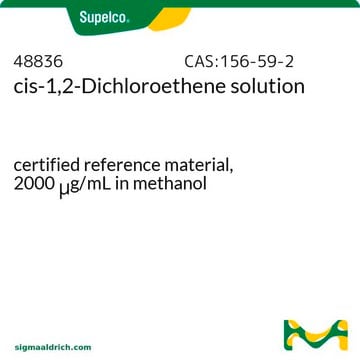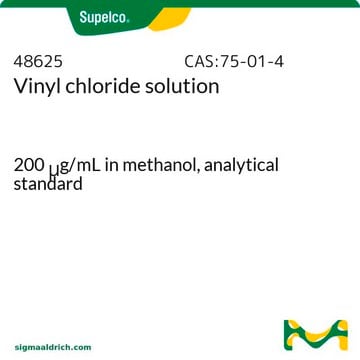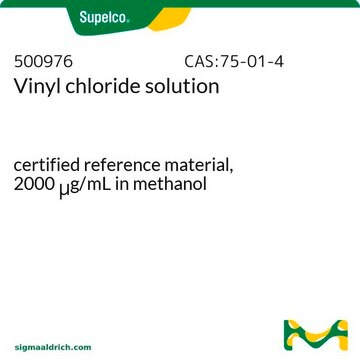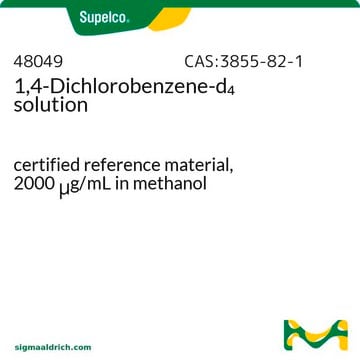48597
cis-1,2-Dichloroethene
analytical standard
Synonyme(s) :
cis-1,2-dichloroéthylène
About This Item
Produits recommandés
Qualité
analytical standard
Niveau de qualité
CofA (certificat d'analyse)
current certificate can be downloaded
Conditionnement
ampule of 1000 mg
Technique(s)
HPLC: suitable
gas chromatography (GC): suitable
Indice de réfraction
n20/D 1.449 (lit.)
Point d'ébullition
60 °C (lit.)
Pf
−80 °C (lit.)
Densité
1.284 g/mL at 25 °C (lit.)
Application(s)
environmental
Format
neat
Température de stockage
2-8°C
Chaîne SMILES
Cl\C=C/Cl
InChI
1S/C2H2Cl2/c3-1-2-4/h1-2H/b2-1-
Clé InChI
KFUSEUYYWQURPO-UPHRSURJSA-N
Vous recherchez des produits similaires ? Visite Guide de comparaison des produits
Application
En option
Mention d'avertissement
Danger
Mentions de danger
Conseils de prudence
Classification des risques
Acute Tox. 4 Inhalation - Acute Tox. 4 Oral - Aquatic Chronic 3 - Flam. Liq. 2 - Skin Irrit. 2
Code de la classe de stockage
3 - Flammable liquids
Classe de danger pour l'eau (WGK)
WGK 2
Point d'éclair (°F)
42.8 °F - closed cup
Point d'éclair (°C)
6.0 °C - closed cup
Équipement de protection individuelle
Eyeshields, Faceshields, Gloves
Choose from one of the most recent versions:
Déjà en possession de ce produit ?
Retrouvez la documentation relative aux produits que vous avez récemment achetés dans la Bibliothèque de documents.
Les clients ont également consulté
Notre équipe de scientifiques dispose d'une expérience dans tous les secteurs de la recherche, notamment en sciences de la vie, science des matériaux, synthèse chimique, chromatographie, analyse et dans de nombreux autres domaines..
Contacter notre Service technique












